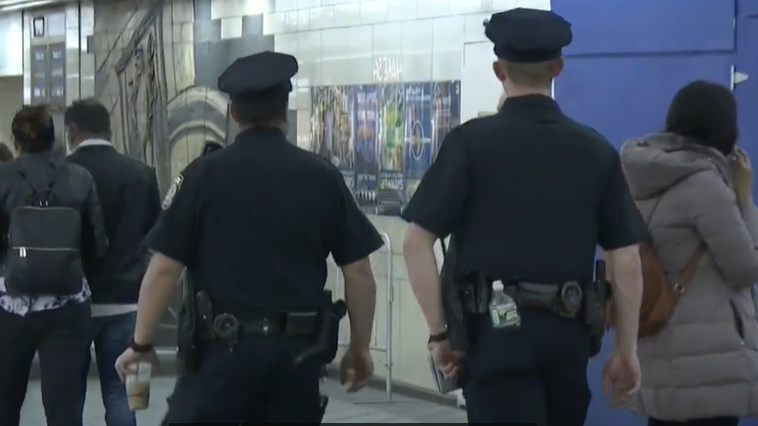
Gotham has a new mayor whose recent attestations about remedying the various woes of the city’s massive subway system are ambitious. Whereas former NYC Mayor Bill de Blasio hazed and dazed the NYPD ranks, Mayor Eric Adams is channeling tunnel vision, specifically having to do with unspeakable crime and public health conditions in the often unsightly, dank train stations infested with rats.
Having grown up in NYC, I watched the rodent colony scatter between the tracks, devouring food tossed by riders biding time on the concrete platforms. Nothing like an impromptu amateur science experiment, observing rodent behaviors, while awaiting the dinful, screechy subway trains barreling through tunnels and into antiquated, graffiti-laden, dis-repaired environs. When that show is over, gobs of pushy people jockey for space, already eyeballing the rarity of empty seats as the train slows to a stop. Albeit awkward to consider, life down in New York’s massive basement is the norm for natives, so rat-feeding sessions were not necessarily accompanied by squeamish sounds from spectators. Similarly, NYPD Transit Bureau cops are rather used to inexplicable activities of depraved individuals preying on innocents using the city’s underground mode of transportation.
Given that, Mayor Adams has initiated a tough-on-crime stance. As well, he is set on removing (displacing) the homeless population from the subway system.
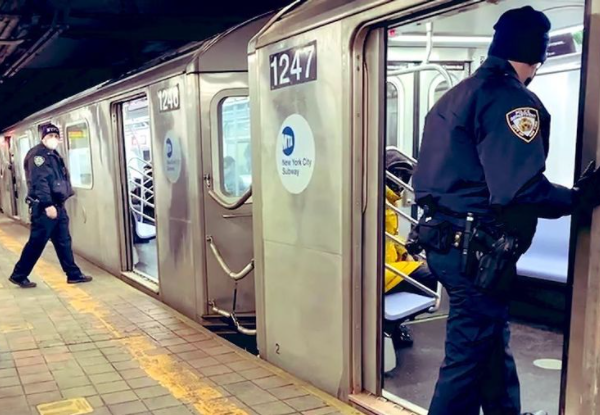
(Photo courtesy of the NYPD Transit Bureau.)
Although informal, subway life in the Big Apple allows ample study of human psychology, with behavioral traits to make Freud a prescient genius. Vacationing tourists and out-of-town businesspeople stood out like walruses navigating the ice-surfaced tundra; some visitors may have even eeked and grunted at the unsavory sights down under (no, not you, Australia). Exceptionally, a small portion of the city subway system involves “El trains,” which are outdoor stations elevated directly above automobile traffic and pedestrians moving about surface streets. Din, din, and more din—it’s inescapable. Having endured it for over two decades, it is entirely conceivable that NYPD transit cops have some of the most challenged auditory capacities. (In a moment, we’ll tackle more of the hazardous public health realms encountered by public safety providers and ridership.)
As was the case when I was riding within the labyrinth of NYC Metropolitan Transportation Authority (MTA) mass transit options (trains and buses, often connecting to surface-level cabs), the subway then was as deplorable as present-day deterioration and crime rampancy. The faces may change, but the blight remains mostly the same in many stations. Mr. Adams seeks to clean it all up, and that most prominently relies on the metropolis’s police force. Hopefully, this mayor will throw necessary support behind the men and women in NYPD-blue, minus typical political meddling and prejudging not-so-pretty pictures hitting the wire. Largely liberal domains have been highly disappointing —mostly police oppositionists— especially in recency.
Last week, Mayor Adams introduced his Subway Safety Plan, championing not only a safer transit conglomerate but one also void of the homeless encamped in the noisiest digs in the world. Mayor Adams summed up his new initiative by saying, “No more just doing what you want!” That comment alone takes a deserved poke at the former Hizzoner’s soft-on-crime stance.
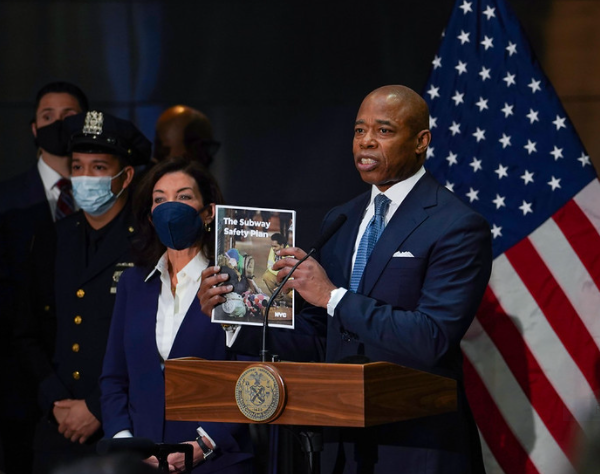
(Photo courtesy of the Metropolitan Transit Authority.)
Per a Fox News report, the Subway Safety Plan has a few elements in focus: “One component of the safety plan is enforcement, the other is a pathway to care for homeless and mentally ill people. The NYPD is involved with both.”
NYPD Transit Deputy Inspector Kenneth Gorman provided a run-down of what his police force is expected to implement: “They’ll scan those [subway] cars for any kinds of issues that we need to address, whether they be law enforcement issues or people in need of services. They’ll also try to make contact with as many members of the public and commuters as possible, and if they have any concerns, they can bring those to the attention of the officers.”
Police officers assigned to NYPD’s Transit Bureau, responsible for the public safety of the metropolis’s 472 subway stations linked by 665 miles of rails, have one of the most volatile environs in which to work. That’s the paramount perspective due to criminal elements which slither around and blatantly victimize any of its roughly 5.6 million daily riders. On the MTA site are two tell-tale indicators of the dangers down there. Any reports of incidents of sexual misconduct and/or reports of assaults on a transit worker are directed to the NYPD Transit Special Victims Squad detectives for investigation. Yet, a vast scope of improprieties and illegalities are omnipresent and have festered over time.

(Graphics depicting NYC subway system, courtesy of the Metropolitan Transportation Authority.)
Throughout the last few years, people being pushed in front of trains have been making headlines. The New York Post published a How-to guide to surviving being shoved in front of a train. Slashings and stabbings by ostensibly mentally disordered suspects have surged. Fare evasion? That’s been a static norm in NYC subways since forever; I watched it as a kid, token in hand, paying my fare share, while others just hopped, skipped, and jumped their way. Some of those instances were met with plainclothes (undercover) police officers. But, as the saying goes, there are just not enough cops to effectively curtail minor and major criminal events in an overpopulated, always fluid domain.
I can share one thing I saw back then which gave some solace and is still present today: Police canine teams.
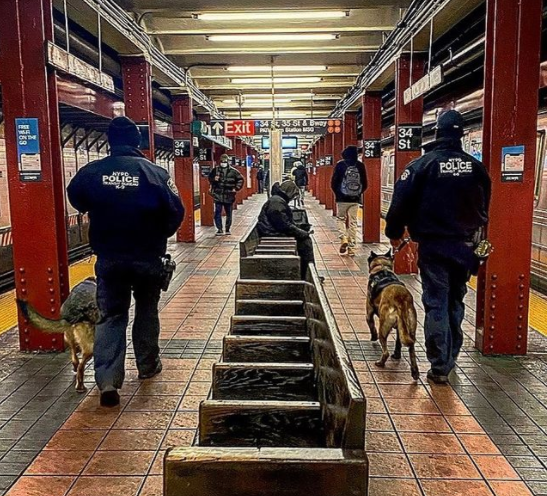
(Photo courtesy of the NYPD Transit Bureau.)
Although NYPD officers exhibited the watchful eyes of the law by looking left-right-left (as if they were crossing the street) upon stepping foot onto and out of subway cars, the police K9 units always garnered a double-take. Much like today, German Shepherds were the partner of choice walking the subway beat. I always opted to ride the subway car which had the police canine teams aboard. Even when they relocated from one subway car to the next while in motion, institutionally satisfying the police Transit Bureau main principle of “being seen” (sometimes stationary posts at turnstiles; walking the entirety of the subway platform; riding in the linkage of eight or so passenger-train cars), the enormity of the system requires many more law enforcement officers. Despite the heavy departures of NYPD cops either applying to other agencies or completely rotating out of policing due to anti-cop stances and defunding measures, the NYC Police Academy has been diligently processing, hiring, and training the future wave of cops to help succeed in the overall mission collectively pursued by the NYPD’s general, Transit, and Housing police divisions.
When I tested for the NYPD, graduates of the academy were slotted according to any of the needs (vacancies) of the three divisions we just mentioned.
Besides the primary concerns posed by criminality, the subway system is a supercharged electrical environment with trickling water flowing due to fissures in tunnel structures. Exacerbating that deadly combination is the general rainfall which crawls down and sometimes floods train stations. As a teen, I wondered where all the litter was transported to via the stream generated by leaks. Since the subway is not necessarily built on peaks and valleys, the standing debris acts like a filtering system, except nothing cleansed ever comes of it. Occasionally, an MTA “track worker” would endeavor custodial duties, not with brooms but with shovels. Shovels! Workers scoop debris while commuters litter—the cycle continues.
With a trash can in tow, these cleaners would collect garbage in between trains pulling into the station, literally standing in between steel beams that held the joint. These cleaners also were targeted by miscreants throughout decades of custodian care. In short, subway safety remains an issue…and that puts us at the juncture of cops assigned to the underworld activities and a mayor who seems to want to do something about it.
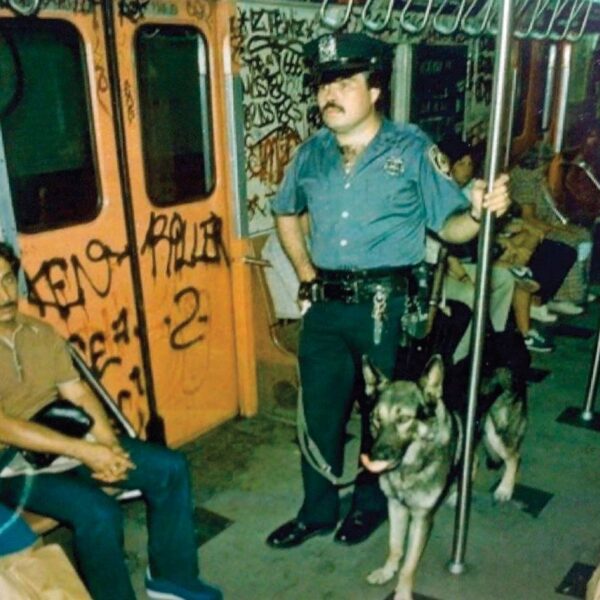
(Photo courtesy of the New York City Police Department.)
Bearing the described atmosphere, NYPD transit police officers endure one of the dankest, most-dour fields of operation imaginable. The public health implications define the inherent purpose of another investigative agency: the United States Occupational Safety and Health Administration (OSHA). OSHA has enforcement inspectors, and NYC’s subway installments of “safety barriers” recently will have tests of integrity (aka evaluating the safety and integrity of these barriers—although intended to provide buffer zones, their suitability must meet muster by precluding liability).
One of the undeniable challenges to the human senses in the subway circuit is the assaultive nature of urination, defecation, phallic symbolism drawn by hypersexualized graffiti artists, and, as mentioned earlier, the constancy of train-barreling din. The summer months catalyze the subterranean transit system with stale, hot air, worsening the stench of human body fluids/waste deposited by the homeless and the can’t-hold-it sorts. Of course, there are public restrooms, but regulars know they are often attended by sexual deviants, desperate drug addicts, and muggers waiting on a victim to traipse in. Cops would poke their heads in and clear out seeming loiterers, but staff shortfalls disable consistency and success.
Transit cops’ in-the-field training occurs on actual subway cars, closed to the public, running through on-board scenarios. In the following image, notice the window portal at both ends of each subway car, allowing a visual scope of the innards and activities aboard linked cars. The “see-throughs” are defeated when the train enters a curved portion of rails, at which time officers walk from car to car via sliding doors, exposing themselves to cross-over dangers and that nasty noise subterranean train systems are known for.
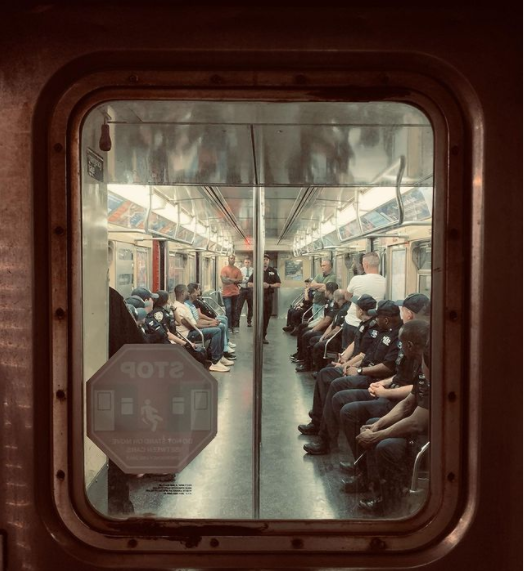
(Photo courtesy of the NYPD Transit Bureau.)
Under the lens of policing in the bloodlines, two friends (brothers) with whom I grew up in Brooklyn went to the NYC Police Academy separately: one graduated and was assigned to the Housing police subset, the other the Transit police. The former always cited constant exposures to poverty (government housing “projects”) and the latter unceasingly winced with the words “stench” and “filth.”
Mind you, the city’s chillier months do not spare subway riders who sometimes wait inordinate periods for the next train to arrive (there is no schedule; the trains operate at a pace and arrive generally, not specifically). In that context, NYPD cops riding on the train get off at subway stations and walk the platform, vacating train cars, and vice-versa. Among the myriad riders, criminals among them take notice, and that engenders the need to have many more cops.
Speaking of taking notice, the NYPD framed one of the general principles of rail police officers: “It’s the hallmark of train patrol in the NYC subway system – readying yourself to scan the platform as you pull into the next station. These Transit cops from District 34 and their counterparts systemwide are riding the rails every day.”
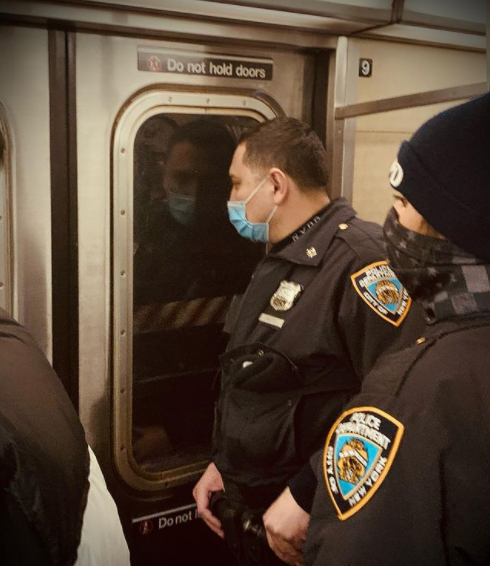
(Photo courtesy of the NYPD Transit Bureau.)
Traditionally, midnight hours see far fewer riders versus business days and millions of commuters making it into the office or whatever workstation one maintains in exchange for a salary. Whereas the summer months practically bake coodies, Mother Nature’s chill at least helps relieve some of the subway stenches. In the thick of it is New York’s Finest.
Will the new Subway Safety Plan have any fruitful effect on the transit system? Will all the transit system’s multi-million daily riders feel safer? Will addressing the homeless inhabiting the subways merely displace them, thereby relocating transients elsewhere in the city? Formidable answers to any of these queries largely rely on adequate NYPD staffing levels (a common theme throughout this material) and consistency of city government supporting police addressing these measures.
In an NYPD press release issued on January 6, 2022, weeks before the mayor officially announced the Subway Safety initiatives, Police Commissioner Keechant Sewell scaled the plan in terms of robust ranks to get the job done: “Safety throughout the subway system remains a top priority for the NYPD. This comprehensive new approach is centered on having more police officers on train cars talking with riders and listening to them because NYPD officers do not just respond to crime in our city—they prevent it and deter it.”
As for the staffing to see this Safety Plan through, the NYPD declared that “Officers in some administrative jobs will be flexibly shifted into underground deployments when necessary.” That’s not adding officers, it’s redistributing them, which leaves the requisite paperwork regardless.
Ending on a positive note, at least the current liberal mayor does not seem to be as anemic as his predecessor, certainly sizing up subway life, implementing plans, and tracking improvements.
The words posted by the NYPD Transit Bureau many months ago echo sentiments of cops politically backed by the mayor’s Subway Safety Plan: “Audible indicators you may have a Transit officer boarding your train —whether it’s the crackle of the police radio or the jingle of subway keys— officers are deployed throughout the system to see you safely from turnstile to turnstile.”